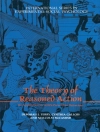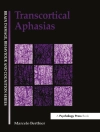An ideal companion to Academic Skills Problems, Fourth Edition, this indispensable workbook provides practice exercises and reproducible forms for use in direct assessment and intervention. The workbook includes teacher and student interview forms, a complete guide to using the Behavioral Observation of Students in Schools (BOSS), tools to support RTI, and exercises in administering assessments and scoring, interpreting, and graphing the results. The convenient large-size format facilitates photocopying.
Spis treści
Introduction STEP 1. ASSESSING THE ACADEMIC ENVIRONMENT – Teacher Interview – Academic Performance Rating Scale – Student Interview – Direct Observation: Manual for the Behavioral Observation of Students in Schools (BOSS) Rationale Identifying the Behaviors for Observation Use of Technology in Conducting Systemic Observation Guidelines for Paper-and-Pencil Direct Observation Making a Coding Interval Recording Completing Identifying Information Observing Peer Comparison Students Coding Academic Engagement Coding Nonengagement Coding Teacher-Directed Instruction Review: Procedure for Conducting the Observation Scoring the BOSS Interpretation of BOSS Data STEP 2. ASSESSING INSTRUCTIONAL PLACEMENT – Reading Oral Retell Techniques Retell Techniques: Examples and Exercises – Math Using Digits Correct in Scoring Math Probes Scoring Digits Correct in Addition and Subtraction Problems Scoring Digits Correct in Multiplication Problems Scoring Digits Correct in Division Problems Math Concepts–Applications -Spelling Using Correct Letter Sequences in Scoring Spelling Scoring Correct Letter Sequences – Written Language Scoring for Words Written Scoring for Writing Mechanics Assessing Quality of Longer Writing Samples Scoring Brief Written Language Samples: Examples and Exercises – Summary Form for Academic Assessment STEP 3. INSTRUCTIONAL MODIFICATION – The Folding-In Technique Example: Folding-In Technique for Word Acquisition and Reading Fluency Example: Folding-In Technique for Multiplication Facts – Cover–Copy–Compare Example: Cover–Copy–Compare for Addition Facts, Sums to 18 Example: Cover–Copy–Compare for Spelling STEP 4. PROGRESS MONITORING – Graphing Data Setting Up Graphic Displays Interpreting Graphic Data Preparing CBM-Type Graphs Answer for Exercise 13 – Developing Local Norms Creating the Measurement Net Selecting the Sample Data Collection Data Analysis and Results – Using Goal Charts – Tools for Response to Intervention: Data-Based Decision Making Levels of Implementation-Data Analysis Grade-Level Group Goal Setting Meeting Grade-Level Goals Data Displays for Grade-Level Meetings Tool for Individual Student Decisions Exercise in Data-Based Decision Making
O autorze
Edward S. Shapiro, Ph D, until his death in 2016, was Director of the Center for Promoting Research to Practice and Professor in the School Psychology Program at Lehigh University. Best known for his work in curriculum-based assessment and nonstandardized methods of assessing academic skills problems, Dr. Shapiro was author or coauthor of numerous books. He also developed the widely used BOSS (Behavioral Observation of Students in Schools) software system and presented papers, chaired symposia, and delivered invited addresses at conferences around the world. Dr. Shapiro’s contributions to the field of school psychology have been recognized with the Outstanding Contributions to Training Award from Trainers of School Psychologists, the Distinguished Contribution to School Psychology Award from the Pennsylvania Psychological Association, the Eleanor and Joseph Lipsch Research Award from Lehigh University, and the Senior Scientist Award from the Division of School Psychology of the American Psychological Association, among other honors.












